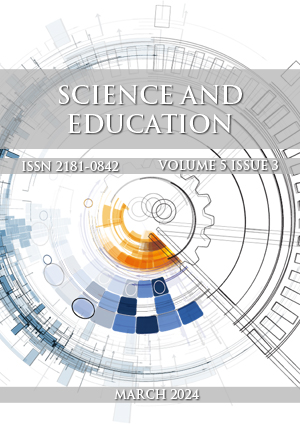Effect of partial replacement of cement by silica fume on strength of high-strength concrete
Keywords:
High Strength Concrete (HSC), Silica Fume, Compressive Strength, Tensile StrengthAbstract
Silica fume is a component of high-strength concrete, which is one of the most important factors in concrete strength. Silica fume is a by-product resulting from the reduction of high-purity quartz with coal, coke, and wood chips in an arc furnace during the production of silicon metal or silicon alloys. The effects of silica fume on the strength of concrete have been shown in the results of the research. Many studies have been done on concrete technology, which has led to various advances in this field. The strength of the concrete is greatly influenced by its ingredients, including silica fume. The materials used in this research can be found in Kabul, and these materials have been selected for laboratory work that can be tested by standard laboratories. In this research, the effects of silica fume on the compressive and tensile strengths of concrete have been studied. In the laboratory work, in addition to the basic ingredients such as cement, sand, gravel, and water, additional admixtures such as silica fume and superplasticizer have been used. The concrete specimen tests have been conducted according to ASTM standards. In this research, the cement is partially replaced with Silica Fume. The same concrete mixtures with different amounts of silica fume (0%, 10% and 15%). The objective of this research is to comprehensively determine the effect of silica fume on high-strength concrete. The result shows that as the amount of silica fume increases up to 10%, the compressive and tensile strengths of concrete also increase, but when the amount of silica fume increases to 15%, the compressive strength of concrete decreases but the tensile strength increases.
References
Sulimani Suliman, High Strength Concrete and the Effects of the Largest Aggregate on It, Master's Thesis, Mazandaran University of Science and Technology, 1997.
Jain Anurag, Pawade P. Y., Characteristics of Silica Fume Concrete, International Journal of Computer Applications, 2015.
ACI Journal, State of the All Report on High-strength Concrete, Reported by ACI Committee 363, 2011.
Gražulytė Judita, Vaitkus Audrius, Šernas Ovidijus, Čygas Donatas, Effect of Silica Fume on High-strength Concrete Performance, 5th World Congress on Civil, Structural, and Environmental Engineering (CSEE'20), October 2020.
U.S. Department of Transportation, Silica Fume User's Manual, Federal Highway Administration, 400 7th Street, SW Washington, DC, 20590, 2005.
Srivastava Vikas, Kumar Rakesh, Agarwal V. C., and Mehta P. K., Effect of Silica Fume on Workability and Compressive Strength of OPC Concrete, Journal of Environmental Nanotechnology, 2014.
Shah S. P., Ahmad Shuaib H., Structural Properties of High Strength Concrete and its Implications for Precast Pre-stressed Concrete, PCI Journal, 1985.
Cai Jiweia, Liu Zixiana, Xu Gelonga,*, Tian Qinga,*, Shen Weiguoc, Li Bowangb, Chen Tiaoc,d, Mix design methods for pervious concrete based on the mesostructure: Progress, existing problems, and recommendations for future improvement, elsevier.com/locate/cscm, 2022.
Lutfawi Reza and Sajidi Seyed Fathullah, Feasibility of Making High Strength Concrete in Laboratory Conditions in Khuzestan Province, Islamic Azad University, Dezful, Iran, 2008.
Mawlood Shelan Shareef, Ministry of Constructiona and Housing, Sulaimaniyah, Iraq.
Bhanja S., Sengupta B., Influence of silica fume on the tensile strength of concrete, Cement and Concrete Research, Volume 35, Issue 4, April 2005, Pages 743-747.
Mccormak Jack C., & Brown Russell H., Design Of Reinforced Concrete. United States of America, 2014.
Srivastava Vikas, Kumar Rakesh, Agarwal V. C., and Mehta P. K., Effect of Silica Fume on Workability and Compressive Strength of OPC Concrete, Journal of Environmental Nanotechnology, 2014.
ACI Committee 318, "Building Code Requirements for Structural Concrete (ACI 318-12) and Commentary (318R-02)", 2011.
ACI, 234R-96, Guide for the Use of Silica Fume in Concrete", Reported by ACI, Committee, 234, 1-1996.
ASTM, Standard C109, Standard Test Method for Compressive Strength of Concrete Cube Specimens, Annual Book of ASTM Standards, ASTM International, West Conshohoen, PA, 2002.
Azghari Nima (2016), Compressive Strength of Concrete and Cubic Samples, Iran.
Delmi Ardeshir Engineer, High Strength Concrete (HSC) in Urban Structures, www.irpdf.com.
Engineering Group, 2016, daryan.com
Hamidi Mohammad Gul, Concrete Mix Design and Technology, Musteqbil Publishing Association, Kabul, Afghanistan, 2014.
Khademi Al-Sadat Faezeh, Akbari Mahmoud, and Khademi Seyyed Soroush, Investigating the Effects of the Amount of Microsilica Pozzolanic Materials on the Compressive Strength of Concrete, 8th National Congress of Civil Engineering, Faculty of Civil Engineering, Babol, Iran, 2014.
ASTM, Standard C496, Standard Test Method for Splitting Tensile Strength of Cylindrical Concrete Specimens, Annual Book of ASTM Standards, ASTM International, West Conshohoen, PA, 2002.
Pachideh Vahid, High-strength Concretes, Riazi Bakhshaish St., Saadat Abad, Tehran, 2015.
Rosa Ana Carolinaa, c, Hammad W. A.b, Haddad Asseda, *, Use of operational research techniques for concrete mix design: A systematic review, Heliyon, cell.com/heliyon, Published by Elsevier Ltd., Contents lists are available at Science Direct, 2023.



